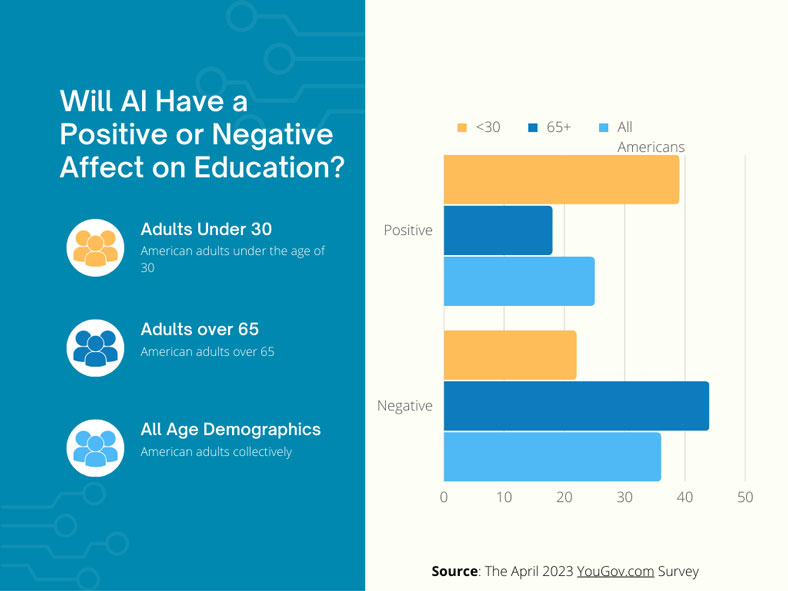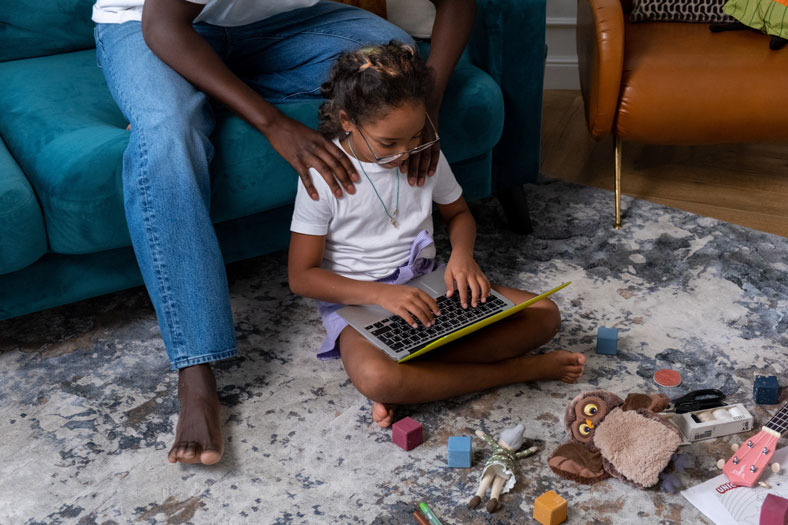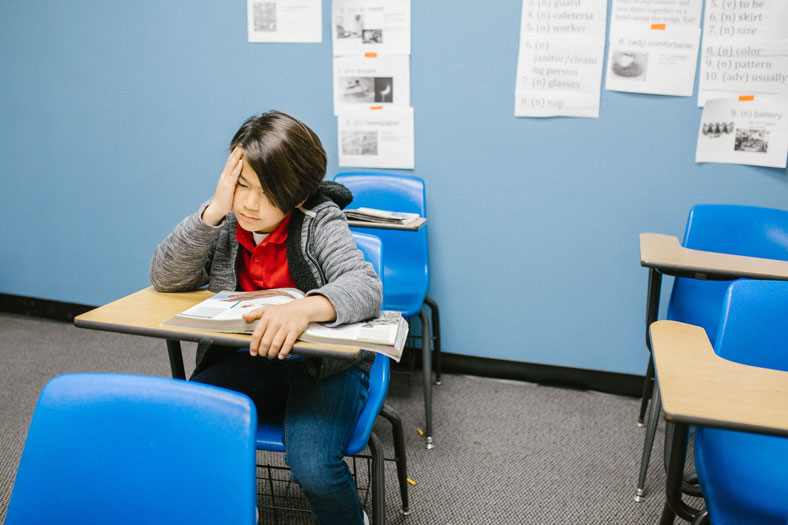AI and The Classroom
8/2/2023

If you've been following recent developments in technology - or even if you haven't - it's likely you've heard about the growing prominence of artificial intelligence. Once the subject of sci-fi novels and speculative tech studies, AI has recently taken the world by storm, with implications for professionals in all sorts of fields. Teachers are no different, with many unique considerations to take into account, from accelerating their own tasks to improving students' educational experiences.
Indeed, educators are among the many professionals contemplating how their field is likely to be transformed by the impressive new technology at our disposal.
Because AI technology has developed so recently - and is continuing to advance in its capacities, seemingly by the day - educators have the opportunity to contribute to the evolution of the teaching profession and what school will look like in the age of advanced machines.
How to Use ChatGPT in the Classroom
In the classroom, artificial intelligence has been the subject of much debate. AI is being discussed by all sides, whether about its positive impact or its challenges. Teachers can automate tedious tasks with AI programs like ChatGPT, as well as provide students with a fully personalized learning experience.
It is important to note that technological advancements such as these are not without fault and can also come with a few limitations. Read on to learn how to use ChatGPT in the classroom, about the advantages and challenges, and the overall impact of integrating ChatGPT and education.
What is AI in Terms of Schoolwork?
It is widely believed that implementing artificial intelligence into the classroom will have detrimental effects on education, while others claim that it will merely challenge the system while also offering a multitude of benefits. OpenAI's CEO compares ChatGPT to many other education advancements over the years in a recent interview with StrictlyVC.
| "We adapted to calculators and changed what we tested for in math class, I imagine. This is a more extreme version of that, no doubt, but also the benefits of it are more extreme, as well." -Sam Altman, CEO of OpenAI
In fact, according to a recent survey completed by YouGov.com, most Americans agree that this is just the type of change that will provide positive challenges to the system and enable even more advancements.

Despite some concerns that this will result in plagiarism and impede the advances educators have made during the internet era, consider these benefits of integrating AI technology such as ChatGPT into the classroom.
Benefits of AI in the Classroom
With ChatGPT, educators can automate tedious tasks such as lesson plans and engaging activities. In addition to acting as a virtual teaching assistant, it can also help with the following:
- Differentiating learning materials for students who require additional support
- Selecting suitable resources for projects
- Monitoring student enrollment and dropout rates
- Using chatbots to guide students and educators on administrative tasks
For example, an English teacher can facilitate this by creating a prompt using ChatGPT that will engage students and encourage them to solve higher level problems related to dissecting quotes and passages from a reading. If necessary, you can adjust the prompts according to the needs of the students and rephrase difficult to understand passages and sentences.

As a result of a more personalized learning experience, students can not only accelerate their learning process, but they can also streamline their study time outside of the classroom for a more thorough analysis of the material. For students who have difficulty understanding concepts or theories, using ChatGPT in the classroom can be a great one-to-one tutoring tool.
When it comes to brainstorming ideas, integrating AI into the classroom is beneficial to both teachers and students. In addition to educators creating prompts for students to take alternative approaches to lesson plan goals, students can also create their own prompts for taking alternate perspectives on new topics and assignments.
By integrating artificial intelligence into the classroom, students and teachers will be able to engage in complex thinking as well as connect new concepts that weren't previously linked with traditional teaching methods.
Difficulties of AI in the Classroom

Technology advancements are not without limitations. AI is an acronym for artificial intelligence, which implies that when compiling projects beyond the realm of common knowledge, you may have to verify your data and sources. Considering that any information obtained from the internet should be fact checked, this flaw could encourage students to conduct thorough research.
One of the biggest limitations of using ChatGPT in the classroom is its limited knowledge base. In general, the program only houses materials prior to September 2021. This can be problematic since educators want their students to have access to the most current data and sources.
The issue of plagiarism is also a major concern for educators. In most cases, it is very difficult to identify AI generated text unless misinformation is present. In today's technological age, this can cause a great deal of controversy in terms of ethics and accountability at all levels of education, as well as catering to the instant gratification of the internet age.
While educators often stress accountability and ethical conduct as well as preparing students for the real world and the workforce, many educators wonder what the future will hold for the workforce as a result of these AI integrations.
AI Lesson Plan: Using ChatGPT to Teach Essay Organization and Fact-Checking
As mentioned above, one of educators' chief concerns about the proliferation of AI writing programs is that they do not necessarily produce texts that meet the high standards for writing that teachers would like students to uphold. This is true for the quality of the prose, which can sometimes stray from logical argument and traditional essay structure, as well as for the citations and stated facts, which at present AI does not have the full capacity to verify.
Fortunately, resourceful teachers can make the most of AI's inefficiencies, spotlighting these errors to teach a lesson in the process.
If you are a classroom teacher, you have the opportunity to create an illuminating lesson plan that does the opposite of what students expect: rather than discouraging the use of AI, it will require it. The steps are as follows:
- STEP ONE: GENERATING THE ESSAY. Start by creating an AI-generated essay on the subject of your choice - ideally, something that fits into your current curriculum. (You can also have students generate essays on their own, although this may make your own work reviewing more challenging). These essays should pertain to topics that require some amount of citation and reportage of factual information.
- STEP TWO: REVIEWING THE WRITING. Ask students to review these AI-generated essays for proper standardized essay structure, annotating the text paragraph by paragraph to see how it holds up against the expectations for their classroom work. They can note both accurate and inaccurate essay structure. This can be a great way for students to brush up on their own essay-writing skills.
- STEP THREE: FACT-CHECKING. Now students can highlight all of the facts stated within the essay. If these facts include citations, students can go directly to the source to substantiate the claims made in the paper. If the facts do not include citations, students can be tasked with the sometimes challenging work of verifying these statements themselves. This can serve a dual purpose, at once building students' abilities as fact-checkers and at the same time, illustrating that AI cannot always be relied upon to report true information.
- STEP FOUR: REVISING THE ESSAY. Having annotated and fact-checked their AI-generated documents, students can now move on to making revisions. Chances are, this will involve some fairly extensive rewriting on their end, restructuring the essay to match traditional expectations and incorporating thoroughly vetted and verified facts. This they can turn in as their final paper.
This lesson plan is ideal for high school aged students, as they are likely already aware of the rise of AI and might feel inclined to make use of it to an extent that is detrimental to their education. By incorporating AI directly into classroom exercises, you can show your students that you are welcoming in the next frontier of writing and learning - while at the same time demonstrating that this technology cannot in its own right do what students are expected to do. Indeed, as we are all learning, AI is an instrument that can be highly useful, yet it is also one that requires ingenuity and intelligence in order to serve its purpose.
Tips and Tricks
Here are some tips to ensure you stay on top of the learning curve when it comes to AI and the classroom. Embracing new technological integrations is the first step. Although it can be tempting to restrict the programs, AI technology is here to stay. A blanket ban would set education back rather than propel it forward.
"There may be ways we can help teachers be a little more likely to detect output of a GPT-like system. But honestly, a determined person will get around them."
~Sam Altman, CEO of OpenAI
Educators and students can benefit from workshops and meetings focused on the integration of programs such as ChatGPT into the classroom. In this way, teachers of all backgrounds will be able to stay abreast of any new advancements and minimize their time as a result. As a student, knowing that educators have a positive outlook on technology and speedy learning is beneficial.
Workshops and planning days can prove helpful in establishing a better connection with students and so forth when it comes to working on new projects and understanding course material with ChatGPT. By creating a prompt and tailoring it to your specific requirements, you can transform those one to two hour tasks into ten minute ones.
There are many stigmas associated with AI such as plagiarism and ethics, however one of the best tips you can follow is to never follow AI blindly. To shift the stigma and to create productivity on all educational levels, it is imperative to follow these new advancements responsibly. As an example, Winston AI's detection tool can help identify AI generated materials, including current versions and newer versions of ChatGPT (GPT-4).

Get up to Speed with AI
While there are many options for how to use ChatpGPT in the classroom and many different approaches, keeping an open mind is probably the best approach. Whether you are a first-year educator or an experienced educator, AI is here to stay, and it is essential that you keep up to date with the technology. As technology advances and artificial intelligence are incorporated into the classroom, educators and students alike can thrive.
In addition to workshops, various degree programs focus on staying abreast and maximizing your time in the classroom. Teacher.org, provides a variety of resources and career paths to choose from. Learn more about your career options in education by clicking the button below. Start building your future today.
FAQs
Are working teachers expected to use AI in the classroom?
At present, no, using AI is not an all-out expectation for teachers, and some educational institutions may actively oppose the use of AI by teachers. However, as AI technology continues to improve and expand its capacities, this may change, as it may prove to be too efficient to ignore. This is part of why teachers are encouraged to begin to embrace AI, learning about its advantages and gaining an understanding of its limitations to instrumentalize it fully within the classroom.
Is AI likely to replace teachers?
Not anytime soon! At present, AI is capable of generating materials such as texts, images, videos, and music based on user inputs. As mentioned above, these materials are not always coherent or accurate. Further, AI is nowhere near close to being able to perform the hands-on work of a teacher, arguably the most critical aspect of the teaching profession: providing long-term support through observing student needs over time and tailoring a nuanced educational program to meet their needs.
In fact, the Bureau of Labor Statistics reports an anticipated job growth for teachers of 5% by 2031, in line with the average for all occupations. This means that for all intents and purposes, teaching still promises to be a secure career path.
What are current teacher salaries?
According to the Bureau of Labor Statistics, median teacher salaries across the US are as follows:
- Kindergarten and Elementary School Teachers: $61,350
- Middle School Teachers: $61,320 per year
- High School Teachers: $61,820 per year
As you can see, these median salaries are quite similar across grade levels. However, it's important to note that one's salary can vary greatly depending on your location, your employing institution, and your years of experience on the job.
- AI and The Classroom - August 2, 2023
- Side Hustles for Teachers - August 2, 2023
- How to Become a Teacher Through Certification - October 10, 2022









